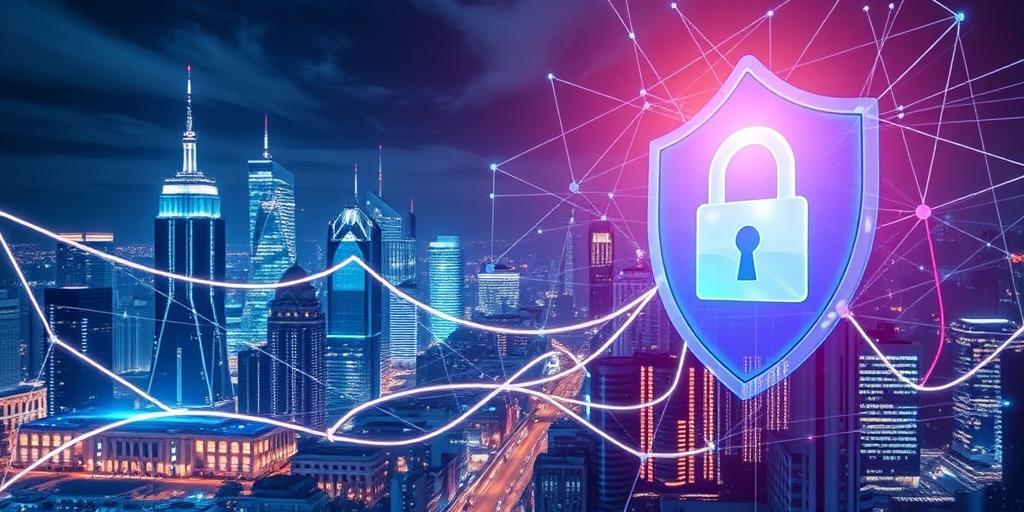The State of Cybersecurity in 2025: Evolving Threats
As we look ahead to 2025, the cybersecurity landscape is projected to be vastly different from what we see today. Rapid technological advancements, coupled with increasingly sophisticated threat actors, are setting the stage for a complex and challenging environment. This article provides an overview of the key trends and threats expected to shape cybersecurity in 2025.
Key Trends Shaping Cybersecurity in 2025
- AI-Powered Threats and Defenses: Artificial intelligence (AI) will play a dual role. On one hand, it will empower cybercriminals to automate attacks, create more convincing phishing campaigns, and bypass traditional security measures. On the other hand, AI will also enhance defensive capabilities through predictive threat analysis, automated incident response, and improved anomaly detection.
- Increased Focus on IoT Security: With the proliferation of Internet of Things (IoT) devices, the attack surface will expand exponentially. Securing these devices, which often have limited processing power and security features, will become a critical priority. Expect to see new regulations and standards aimed at improving IoT security.
- Quantum Computing Threat: Quantum computing poses a long-term threat to current encryption methods. By 2025, while quantum computers may not be fully mature, organizations will need to start preparing for the transition to quantum-resistant cryptography to protect sensitive data.
- Rise of Deepfakes and Disinformation: The use of AI-generated deepfakes for disinformation campaigns will become more prevalent. These sophisticated forgeries can be used to manipulate public opinion, damage reputations, and even influence geopolitical events. Detecting and mitigating deepfake threats will require advanced technology and media literacy.
- Cybersecurity Skills Gap: The shortage of skilled cybersecurity professionals will continue to be a significant challenge. Organizations will need to invest in training and education programs to build a workforce capable of addressing the evolving threat landscape. Automation and AI-powered security tools can help alleviate some of the burden, but skilled analysts will still be essential.
Evolving Threat Landscape
- Ransomware Attacks: Ransomware will remain a persistent threat, with attackers increasingly targeting critical infrastructure and supply chains. Expect to see more sophisticated ransomware variants that use advanced techniques to evade detection and exfiltrate data.
- Supply Chain Attacks: Supply chain attacks, such as the SolarWinds breach, will continue to be a major concern. Organizations will need to improve their supply chain security practices, including vendor risk management and security audits.
- Cloud Security Challenges: As more organizations migrate to the cloud, securing cloud environments will become increasingly complex. Misconfigurations, data breaches, and insider threats will be among the top cloud security challenges.
- Mobile Threats: With the increasing reliance on mobile devices for both personal and professional use, mobile threats will continue to evolve. Expect to see more sophisticated mobile malware, phishing attacks, and vulnerabilities in mobile operating systems.
- Insider Threats: Insider threats, whether malicious or unintentional, will remain a significant risk. Organizations will need to implement robust access controls, monitoring, and training programs to mitigate insider threats.
Preparing for 2025
To prepare for the cybersecurity challenges of 2025, organizations should:
- Invest in AI-powered security solutions: Leverage AI and machine learning to automate threat detection, incident response, and vulnerability management.
- Strengthen IoT security: Implement security best practices for IoT devices, including strong authentication, encryption, and regular security updates.
- Develop a quantum-resistant cryptography strategy: Begin planning for the transition to quantum-resistant cryptography to protect data from future quantum computing threats.
- Enhance supply chain security: Implement robust vendor risk management programs and conduct regular security audits of suppliers.
- Improve cloud security posture: Implement strong access controls, encryption, and monitoring in cloud environments.
- Address the cybersecurity skills gap: Invest in training and education programs to build a skilled cybersecurity workforce.
By understanding the key trends and threats shaping cybersecurity in 2025, organizations can take proactive steps to protect their assets and mitigate risks.
